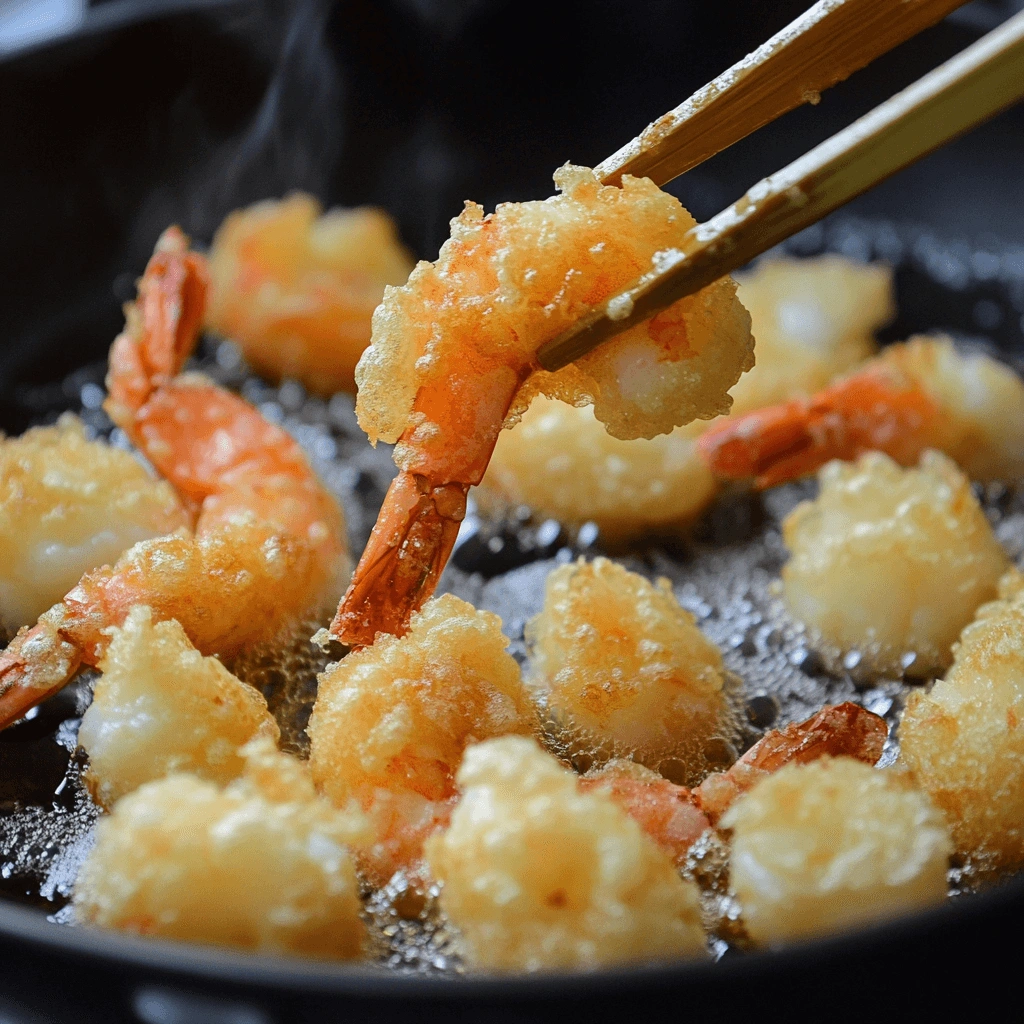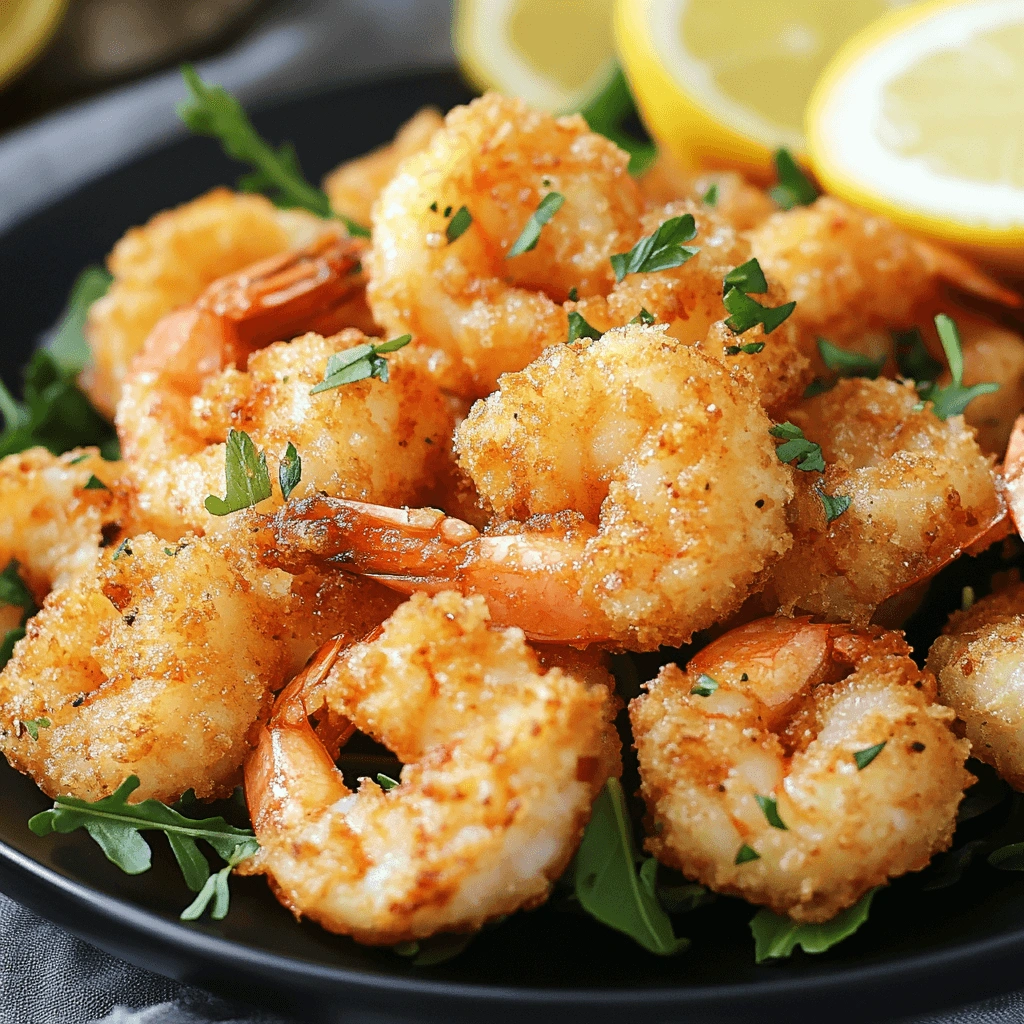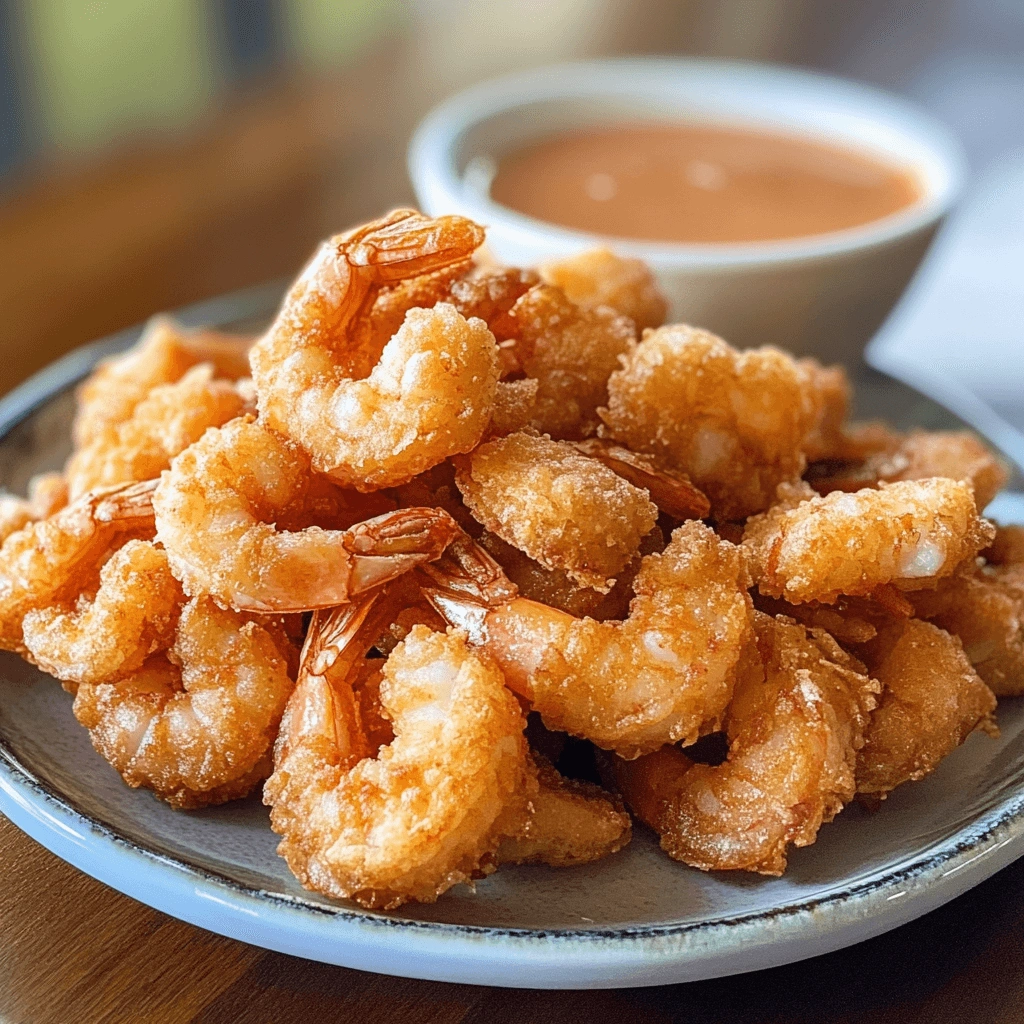Introduction:
If you’ve ever had the pleasure of savoring perfectly crispy tempura shrimp at your favorite Japanese restaurant, you know how deliciously addictive it can be. The light, airy batter combined with the tender shrimp inside creates a flavor experience that’s hard to replicate. But what if you could bring that restaurant-quality shrimp right into your own kitchen? The good news is—you absolutely can. With the right techniques, ingredients, and a little practice, you’ll be able to create golden, crispy shrimp that will impress your family and friends.
In this guide, you’ll learn everything you need to know to make restaurant-quality shrimp every time. From selecting the best ingredients to perfecting the frying technique, we’ll cover it all. Let’s dive into the process and uncover the secrets behind making the best tempura shrimp at home.
Why Tempura Shrimp is So Irresistible
Tempura shrimp is beloved for its light, crispy batter and succulent shrimp. The contrast between the crunchy exterior and the tender interior makes for a textural experience that’s unparalleled. The dish has gained popularity in restaurants worldwide for its perfect balance of simplicity and elegance. But why is it so irresistible?
- Texture and Flavor: The key to perfect tempura shrimp is the contrast between the airy batter and the juicy shrimp. The batter is delicate, yet crispy, creating a satisfying crunch with every bite. Inside, the shrimp stays moist and tender, making it a delightful combination.
- Versatility: Tempura shrimp isn’t just a snack or appetizer. It’s versatile enough to be used as a topping for sushi, paired with dipping sauces, or served with rice and vegetables for a complete meal.
- Restaurant Appeal: When done correctly, tempura shrimp looks and tastes like something you’d find in a fine-dining restaurant. The crispy, golden exterior paired with perfectly cooked shrimp is a showstopper that adds an element of indulgence to any meal.
Essential Ingredients for Perfect Tempura Shrimp
Creating restaurant-quality tempura shrimp starts with choosing the right ingredients. Every component plays a crucial role in achieving the desired result. Let’s take a look at the essentials you’ll need.

Key Ingredients for Tempura Shrimp Batter
- Shrimp: Fresh, high-quality shrimp are essential for tempura. Look for shrimp that are peeled, deveined, and have their tails intact. Larger shrimp work best, but medium shrimp can also be used. Wild-caught shrimp are ideal for flavor, but farmed shrimp can work well too.
- Tempura Flour: While you could use all-purpose flour for tempura batter, tempura flour gives the batter a lighter, airier texture. If you can’t find tempura flour, you can substitute it with a mix of all-purpose flour and cornstarch.
- Cold Water: The key to crispy tempura is cold water. The cold water helps to create the light, airy texture that makes the batter so crisp. Always use ice-cold water to prevent overmixing, which can result in a dense batter.
- Cornstarch: Adding cornstarch to the batter helps to create a crispy, crunchy texture. It absorbs moisture and adds lightness to the batter.
- Baking Powder: A small amount of baking powder helps the batter rise and puff up during frying, adding to the crispy texture.
Dipping Sauces to Complement Tempura Shrimp
Tempura shrimp is often served with a dipping sauce that complements its light, crispy nature. Here are a few popular options:
- Soy Sauce-Based Sauce: A classic tempura dipping sauce made from soy sauce, mirin, and dashi. It has a savory, slightly sweet flavor that enhances the shrimp’s taste.
- Spicy Mayo: For a little kick, spicy mayo made with mayonnaise, sriracha, and a touch of lime juice can be a delicious accompaniment.
- Tonkatsu Sauce: A thicker, sweeter sauce that pairs beautifully with tempura shrimp for those who prefer a more robust flavor.
Step-by-Step Guide: How to Make Restaurant-Quality Tempura Shrimp
Achieving restaurant-quality tempura shrimp involves a few key steps: preparing the shrimp and batter, frying the shrimp, and serving the dish. Here’s a step-by-step guide to help you along the way.

Preparing the Shrimp and Batter
- Prepping the Shrimp: The first step in preparing tempura shrimp is cleaning the shrimp. Start by peeling the shrimp, leaving the tail on for a nice presentation. Use a sharp knife to make a small incision along the underside of the shrimp to prevent it from curling during frying. This will help the shrimp stay straight and look more appealing when served.
- Making the Batter: To make the batter, combine tempura flour, cornstarch, baking powder, and ice-cold water in a bowl. The key is to mix the batter gently—just enough to combine the ingredients. Avoid overmixing, as this can cause the batter to become too thick and heavy. The batter should be lumpy, which is perfect for achieving the crispy texture that makes shrimp so desirable.
Frying Tempura Shrimp to Perfection
- Choosing the Right Oil: When frying tempura shrimp, it’s essential to use an oil that can withstand high temperatures. Vegetable oil or canola oil is ideal for frying tempura, as they have a high smoke point and a neutral flavor.
- Optimal Temperature: The oil temperature should be between 350°F and 375°F (175°C–190°C). If the oil is too hot, the batter will burn before the shrimp cooks through; if it’s too cool, the batter will absorb too much oil and become soggy. To check the temperature, you can drop a small amount of batter into the oil; it should sizzle and float to the surface within seconds.
- Frying Method: To fry the shrimp, dip each shrimp into the batter, coating it lightly. Gently lower the shrimp into the hot oil, being careful not to overcrowd the pan. Fry in small batches to ensure even cooking. The shrimp should cook for about 2–3 minutes, or until golden brown and crispy. Use a slotted spoon to remove the shrimp and drain them on a wire rack to keep them crisp.
Serving Tempura Shrimp
- Plating: When serving tempura shrimp, presentation is key. Arrange the shrimp neatly on a plate and garnish with a lemon wedge and a few sprigs of parsley for a pop of color.
- What to Pair With: Tempura shrimp pairs beautifully with a variety of sides. Consider serving it with steamed rice, a crisp green salad, or other tempura vegetables like sweet potato, zucchini, and bell peppers.
Common Mistakes to Avoid When Making Tempura Shrimp
Even the most experienced cooks can make mistakes when preparing tempura shrimp. Let’s go over some common errors and how you can avoid them.
Overmixing the Batter
One of the most common mistakes when making tempura shrimp is overmixing the batter. When you overmix, you activate the gluten in the flour, which can result in a dense, heavy batter. To avoid this, mix the batter just until the ingredients are combined. It’s okay if the batter is lumpy; that’s what gives tempura its signature light texture.
Incorrect Oil Temperature
Frying at the wrong temperature can lead to soggy or greasy tempura. If the oil is too hot, the batter will burn before the shrimp cooks. If the oil is too cool, the shrimp will absorb too much oil and become greasy. Always use a thermometer to ensure your oil is at the right temperature.
Overcrowding the Fryer
Overcrowding the pan is another mistake to avoid. If you add too many shrimp at once, the oil temperature will drop, resulting in soggy shrimp. Fry the shrimp in small batches to maintain the oil temperature and ensure each shrimp cooks evenly.
Tips for Making Tempura Shrimp at Home Like a Pro
Here are a few pro tips to elevate your tempura shrimp game and make sure you’re always achieving the perfect result:

- Use a Deep Fryer for Consistency: A deep fryer ensures the oil temperature stays consistent throughout the frying process. If you don’t have a deep fryer, you can use a heavy pot, but be sure to monitor the oil temperature closely.
- Chill Your Batter: Keep your batter cold until you’re ready to fry. The colder the batter, the crispier the tempura will be.
- Fry in Small Batches: Frying in small batches ensures that each shrimp is perfectly cooked and crispy. Overcrowding the fryer can cause the shrimp to stick together and lose their crispiness.
- Let the Shrimp Rest: After frying, let the shrimp rest on a wire rack to drain excess oil. This will help the shrimp stay crispy.
Tempura Shrimp Recipe Variations
While classic tempura shrimp is always a crowd-pleaser, there are plenty of ways to get creative with the recipe. Here are a few variations to try:
Vegetable Tempura Shrimp Combo
For a more colorful and diverse dish, consider pairing your shrimp with tempura vegetables like sweet potato, zucchini, or bell peppers. The crispy batter will complement the natural sweetness of the vegetables, creating a perfect balance of flavors.
Spicy Tempura Shrimp
If you like a bit of heat, spice up your tempura shrimp by adding chili flakes to the batter or drizzling them with spicy mayo. This variation is perfect for those who love a little kick in their food.
Frequently Asked Questions (FAQ)
How do I keep tempura shrimp crispy after frying?
To keep tempura shrimp crispy, place it on a wire rack to allow excess oil to drain away. Avoid placing the shrimp on paper towels, as they can trap moisture and make the shrimp soggy.
Can I make tempura shrimp ahead of time?
Tempura shrimp is best served immediately after frying to maintain its crispiness. However, you can prepare the shrimp and batter ahead of time, then fry them right before serving.
What is the best oil for frying tempura shrimp?
The best oils for frying tempura shrimp are vegetable oil, canola oil, or peanut oil. These oils have a high smoke point and won’t overpower the delicate flavor of the shrimp.
What is the secret to light and crispy tempura shrimp?
The key to light and crispy tempura shrimp is using ice-cold water in the batter and frying the shrimp at the correct oil temperature (350°F–375°F). This ensures the batter stays crisp and light.
Conclusion: Enjoy Restaurant-Quality Tempura Shrimp at Home
Now that you have all the knowledge and techniques to make restaurant-quality tempura shrimp, it’s time to put it into action. With the right ingredients, the perfect batter, and proper frying techniques, you’ll be able to enjoy golden, crispy tempura shrimp at home. Whether you’re making it for a special occasion or just a weeknight dinner, your homemade tempura shrimp will taste just as good as what you’d find in a restaurant—and maybe even better. So go ahead, roll up your sleeves, and make the best shrimp your taste buds have ever experienced!
Call to Action: Ready to try making restaurant-quality tempura shrimp at home? Gather your ingredients, follow the steps, and start frying today! Let us know how it turns out or share your tips and tricks in the comments below!

